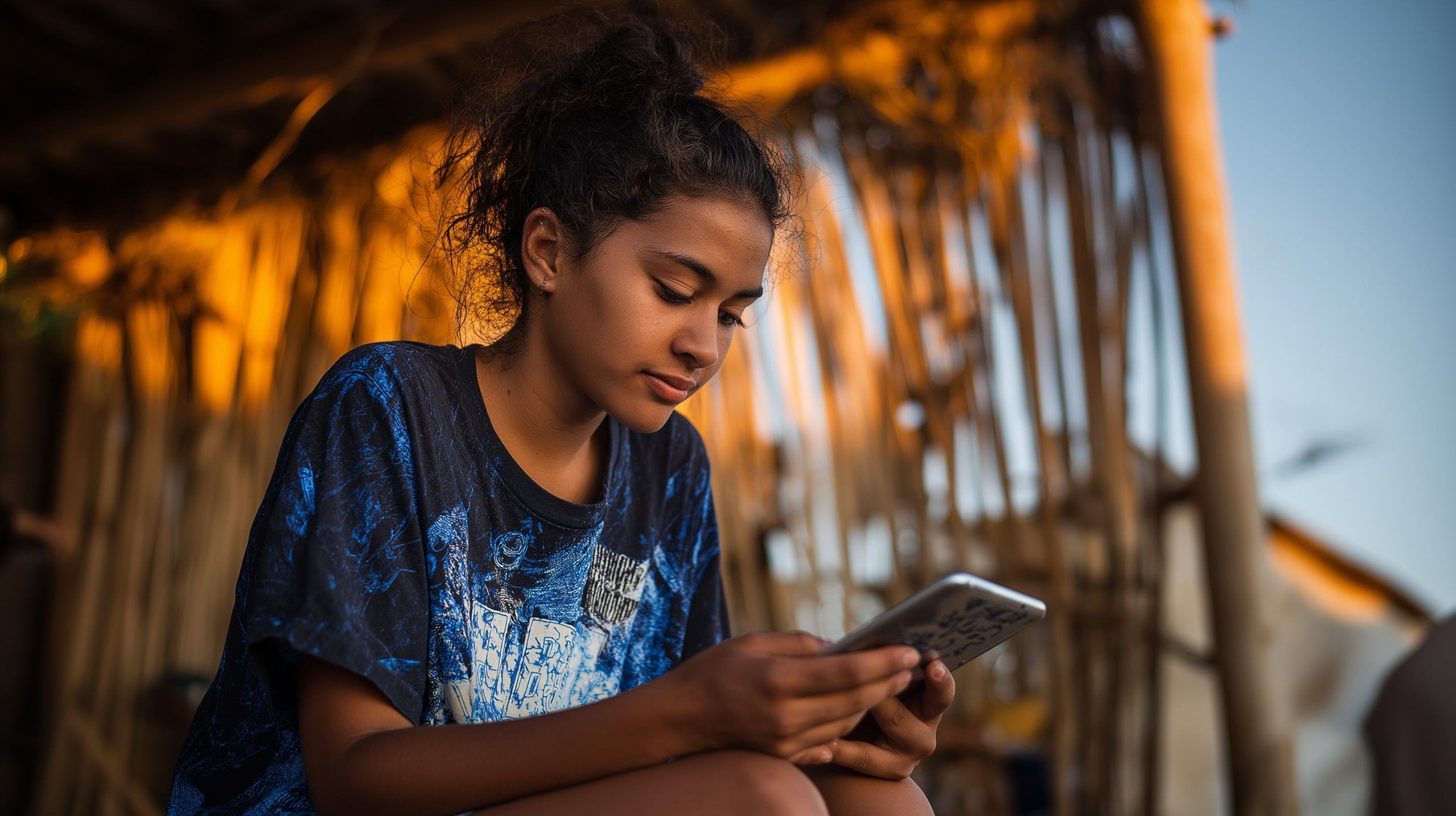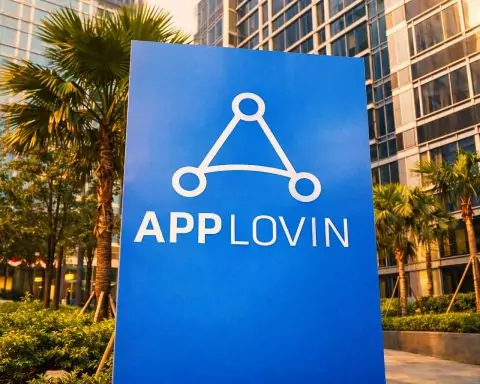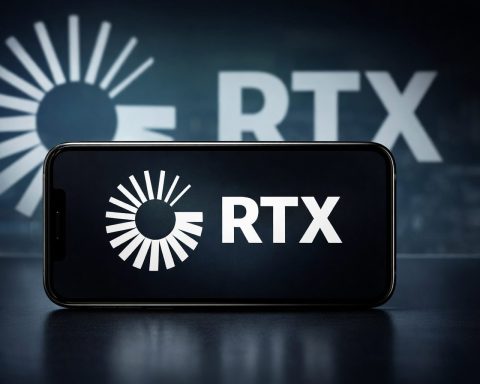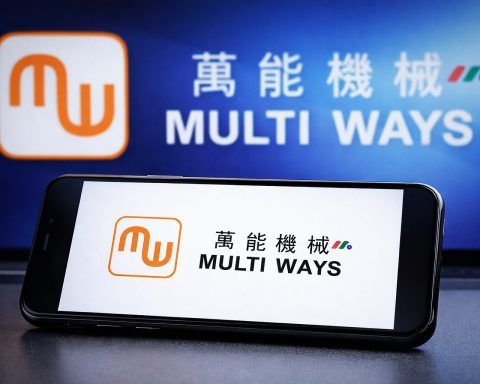- Nauru has a population of about 12,000 and an area of 21 km², with roughly 83% of residents using the internet as of 2023.
- Since 2022–2023, SpaceX Starlink has become available in Nauru, and the Starlink Community Gateway on Command Ridge began operating in December 2024.
- In January 2025 Neotel launched a nationwide 5G network in Nauru, marketed as the first nationwide 5G+ network in Oceania.
- Digicel Nauru launched the island’s first GSM mobile network in August 2009, initially with about a two-year monopoly.
- Telstra acquired Digicel Pacific in 2021, bringing Digicel Nauru under Australia’s largest telecom group.
- By 2023 there were about 15,300 active mobile connections on Nauru, exceeding the 12,000 residents and implying roughly 120% penetration.
- Typical 2023–24 prepaid data bundles included 35 GB for $40 (7 days), 70 GB for $70 (14 days), and 170 GB for $140 (30 days), with an unlimited home plan around AUD 120 per month.
- Starlink accounted for an estimated 64% of Nauru’s internet subscriptions by 2025, offering speeds of 50–200 Mbps and latency around 50 ms.
- The East Micronesia Cable (EMC) is planned for completion in 2025–2026, with a budget around $95 million and NEC contracted in 2023 to lay the fiber linking Nauru to Pohnpei via Kiribati.
- Cenpac owns the Starlink Community Gateway installed in December 2024, enabling bulk Starlink bandwidth to feed Cenpac and Neotel networks and lowering prices.
Overview of Internet Access in Nauru
Nauru is a tiny Pacific island nation (21 km²) with a population of about 12,000, yet it boasts one of the highest internet usage rates in the Pacific. Approximately 83% of Nauruans are internet users as of 2023 [1], a penetration well above the Oceania average (78% [2]). This high uptake is remarkable given Nauru’s remote location and limited physical connectivity – the island lies hundreds of kilometers from any neighbor and until recently had no undersea fiber-optic cable [3]. Instead, satellite links have been the lifeline of Nauru’s internet, from early geostationary systems to modern low-Earth orbit constellations. Internet access is delivered primarily via wireless networks (4G/5G mobile and Wi-Fi), with virtually the entire population living in the urbanized districts along the coast. Despite the challenges of isolation, Nauru’s government and partners have aggressively pursued digital improvements, making the country an interesting case of rapid adoption amid constrained infrastructure. The current situation features a mix of satellite broadband, a burgeoning mobile network, and impending fiber-optic connectivity – all of which shape the quality, affordability, and inclusivity of Nauru’s internet services.
Historical Development of Internet and Telecom
Internet access in Nauru evolved late but rapidly. Modern telecommunications began in the 1970s when the government established Nauru Telecom as a monopoly operator using Intelsat satellites [4]. However, the country’s economic turmoil in the early 2000s led to a collapse of its telecom infrastructure. In 2003, the sole telephone system failed due to equipment breakdown, and by 2004 Nauru could not pay its satellite bills – effectively leaving the island cut off from global communications [5]. For several years, Nauru had only minimal connectivity (e.g. high-frequency radio or satellite phones), severely limiting public internet access.
A turning point came in 2009: the government sought outside investment to rebuild telecom services. It granted a license to Digicel, a regional mobile operator, which launched Nauru’s first GSM mobile network in August 2009 [6] [7]. This introduced mobile telephony – and by extension mobile internet – for the first time to Nauru’s populace. Digicel built its own infrastructure from scratch (towers, satellite uplinks), as the former Nauru Telecom facilities were largely defunct [8]. For two years Digicel held a monopoly (per a government agreement) [9], during which basic 2G/EDGE mobile data became available. The president at the time hailed Digicel’s arrival as “linking the government, businesses, Nauruans and foreigners to the rest of the world”, ending years without a reliable telecom provider [10].
After the initial monopoly period, competition and public internet services re-emerged. In 2011, the state-owned Cenpac Corporation (Nauru’s original ISP, founded in 1998) was permitted to resume operations [11]. Before Digicel, Cenpac had run an internet café in the Civic Centre; it reopened this facility, now buying bandwidth from Digicel and offering public internet access [12]. Throughout the 2010s, Nauru’s internet capacity grew incrementally. Early on, connectivity relied on slow C-band satellite links, and dial-up or VSAT for limited users. Frequent power outages and high costs also hampered early internet use [13]. By mid-decade, improvements arrived via new satellite technology: in 2015, Digicel began utilizing the O3b medium-Earth orbit satellites, which dramatically increased backhaul bandwidth and reduced latency. This enabled the rollout of 3G/4G mobile broadband by 2016, vastly improving speeds and reliability [14] [15]. Nauru’s residents quickly embraced mobile data – Digicel reported extraordinary growth in data usage once 4G launched [16].
Key developments in recent years have further transformed Nauru’s digital landscape. In 2021, Australia’s Telstra acquired Digicel Pacific (including Digicel Nauru), ensuring continuity of service under a larger telecom framework [17] [18]. Then in 2022–2023, SpaceX’s Starlink low-earth-orbit satellite internet became available in Nauru, giving citizens an alternative high-speed internet option for the first time. By 2024, Nauru’s government forged a partnership with Starlink to deploy a local “Starlink Community Gateway” – essentially a ground station on Nauru to serve the whole island [19] [20]. And in early 2025, a new state-backed operator Nauru Telikom (trading as Neotel) launched what it calls the first nationwide 5G network in Oceania [21]. Thus, in little more than a decade, Nauru’s internet access progressed from non-existent to multi-platform: encompassing 4G/5G mobile, WiMax/Wi-Fi for homes, and direct satellite broadband for those who can afford it.
Timeline of Key Milestones:
- 1970s: Nauru establishes its first international telecom link via Intelsat satellite; Nauru Telecom (government-run) provides telephone and rudimentary data services [22].
- 2003–2004: Telecom crisis – the aging telephone system collapses and satellite service is cut off for non-payment, leaving Nauru with virtually no internet or phone service [23].
- 2009: Digicel Pacific enters Nauru; the first GSM mobile network is launched, bringing basic mobile voice and data to the island [24]. Internet access begins to spread via GPRS/EDGE on mobile phones.
- 2011: Government ends Digicel’s exclusive mandate. Cenpac (state ISP) reopens its Internet Café at Aiwo, leasing bandwidth from Digicel to serve government offices and the public [25].
- 2015: Digicel activates O3b MEO satellite connectivity for Nauru, boosting bandwidth >100% and lowering latency. 4G/LTE service is subsequently rolled out island-wide [26] [27], greatly enhancing internet speed and capacity.
- 2021: Australia’s Telstra (with government support) purchases Digicel’s Pacific operations [28]. Nauru’s President welcomes the deal, noting that Digicel had provided “much-needed” connectivity since 2009 and hoping for continued service improvements [29].
- 2024: Nauru and SpaceX sign an agreement to deploy the Starlink Community Gateway, a local ground station with multiple satellite terminals at Command Ridge. In December 2024 the gateway goes live, delivering island-wide high-speed internet with significantly reduced latency [30] [31].
- 2025: State-owned Nauru Telikom (Neotel), in joint venture with Cenpac, launches a 5G mobile network (leveraging the new Starlink backhaul) and begins offering commercial 5G services in January [32] [33]. This marks Nauru’s entry into next-generation mobile connectivity ahead of many peers.
- 2025–2026 (planned): An undersea fiber-optic cable (the East Micronesia Cable) is under development to connect Nauru to regional cable hubs via Kiribati and the Federated States of Micronesia [34]. Once complete, this will provide Nauru with “far greater data capacity than satellites” and improve redundancy [35].
Internet Infrastructure and Connectivity
Satellite-Dependent International Links
Because of its remote location, Nauru has relied almost entirely on satellite communications for international internet transit. To this day, no submarine fiber cable lands on Nauru (though one is in progress – see Future Plans). Instead, multiple satellite systems link Nauru to the global internet:
- Geostationary Satellites: Historically, Nauru Telecom used C-band geostationary satellites (Intelsat) for both telephony and internet. Even in recent years, a C-band link was reportedly used by certain institutions (e.g. a bank) [36]. Geostationary links are stable but have high latency (~600-800 ms) and limited data rates.
- O3b MEO Constellation: Since 2015, O3b (Other 3 Billion) medium-Earth-orbit satellites (operated by SES) have been a game-changer. O3b satellites orbit much lower than GEO, reducing latency to ~150 ms, and provide significant bandwidth. Digicel Nauru has been the primary customer of O3b, using it to feed the island’s 3G/4G cellular data network [37]. Digicel progressively upgraded its O3b capacity by over 100% through 2015–2016 to meet demand [38]. This enabled broadband speeds and data-intensive services that were previously impossible in Nauru. However, capacity is still finite (in the order of Gbps shared), and O3b service can degrade in heavy rain (Ka-band).
- Starlink LEO Satellite: In 2022–2023, SpaceX’s Starlink low-Earth orbit service became available in Nauru. Residents and businesses began purchasing Starlink user terminals (“dishes”) for high-speed internet. By 2025, Starlink has quickly captured an estimated 64% of the local internet market (by subscriptions) [39] – a testament to its performance. Starlink offers broadband speeds (50–200 Mbps) with latency ~50 ms, a vast improvement over earlier satellites. To further capitalize on this, Nauru’s government partnered with SpaceX to install a Starlink Community Gateway on-island. This consists of multiple Starlink terminals and local caching infrastructure at a central site (Command Ridge), effectively creating a ground station that can feed the entire national network [40] [41]. The gateway, inaugurated in Dec 2024, brings faster, more reliable data service with significantly reduced latency for Nauru [42]. It also allows local ISPs (like Cenpac/Neotel) to purchase bulk bandwidth from Starlink and redistribute it at competitive prices, rather than each user relying on individual Starlink subscriptions [43].
Overall, satellite connectivity remains Nauru’s critical backbone. However, it comes with downsides: limited total capacity, high costs, and weather vulnerability. Cloud cover and rain can disrupt both O3b and Starlink signals, making the network unstable during storms [44]. In addition, without a cable, all internet traffic must traverse space – introducing higher latency than fiber and a dependency on satellite network operators. Nauru has some redundancy (multiple satellite providers), but any prolonged outage (satellite failure or ground station issue) could isolate the island. These factors underscore why Nauru has been actively pursuing a fiber-optic cable connection.
Domestic Network Infrastructure (Mobile, Broadband and Access Points)
Within Nauru, internet access is distributed primarily through wireless networks – there is no extensive fixed-line broadband (the old copper telephone network became defunct in the 2000s). The key components of local infrastructure include:
- Mobile Cellular Network: This is the principal mode of internet delivery to end-users. Digicel Nauru (now owned by Telstra) operates a nationwide mobile network that initially started as 2G GSM (for calls/SMS) and was later upgraded to 3G/4G. With O3b backhaul available, Digicel deployed island-wide 4G/LTE coverage by 2016 [45] [46], using base stations on towers (such as the main telecom tower at Command Ridge). The 4G network offers mobile data to smartphones, tablets, and home wireless modems. Reportedly, infrastructure upgrades in 2020 expanded capacity and improved speeds – e.g. new 4G hardware was installed on towers to increase throughput (Nauru’s government announced “faster internet speeds” upon completion of a 4G upgrade in 2020) [47] [48]. By 2023, the mobile network had about 15,300 active connections, exceeding the population (120% penetration) [49], indicating many users have multiple SIMs or devices. In January 2025, Neotel (Nauru Telikom) launched a 5G service on the island [50]. This new entrant is a joint venture between Cenpac (the state ICT entity) and Telikom PNG, aiming to compete with Digicel. Neotel’s 5G is advertised as the “first nationwide 5G+ network service” in the Pacific [51]. It likely uses 5G radios on existing towers and leverages the Starlink gateway for backhaul. The 5G rollout suggests Nauru’s ambition to leapfrog into advanced mobile tech, although details on its coverage and speeds are still emerging (Neotel has not disclosed vendor details or whether the 5G is standalone) [52] [53].
- Fixed Wireless and Wi-Fi: For home and business broadband, fixed wireless solutions have been popular. In the 2010s, Digicel provided a WiMAX-based service – customers could “buy a WiMAX unit from Digicel to access the internet”, an option promoted to visitors and residents for home internet [54]. That WiMAX network delivered broadband to premises via wireless rather than through phone lines. With the advent of 4G LTE, Digicel also offers home router plans that use the 4G network (effectively turning mobile data into a home Wi-Fi network). Meanwhile, the government’s Cenpac ISP operates public Wi-Fi hotspots; notably, Cenpac’s Internet Café at the Civic Centre (Aiwo District) has been a long-running access point where people can use PCs or connect to Wi-Fi for an hourly fee [55]. This café provides an affordable option for those without personal internet devices. In recent years, additional hotspots or community internet centers may have been set up (e.g. at schools or government buildings), as digital inclusion initiatives expanded.
- Local Backbone and Power: Nauru’s small size (a 19 km coastal ring road) means most settlements are within range of a few cell towers. Fiber-optic or microwave links likely connect the main tower(s) to ground stations (e.g. O3b antenna or Starlink gateway). The core network is relatively simple, but resilience is a concern – the entire system hinges on a few key sites. Power supply on the island has historically been erratic (diesel generators and a small grid), causing outages that can knock out telecom equipment [56]. Backup generators and battery systems are employed at telecom sites to mitigate this, but power stability remains an infrastructural challenge for reliable internet service.
In summary, nearly all internet infrastructure in Nauru is wireless and satellite-based. The island lacks legacy telecom assets like copper lines or cable TV networks, so it has essentially “gone straight to wireless” for connectivity. This has been advantageous in achieving broad coverage quickly – practically the entire population lives in the narrow coastal belt, which is now covered by cellular signals. However, it also means Nauru’s connectivity is inherently bandwidth-constrained by what its satellite links can deliver, until a fiber connection becomes reality.
Internet Service Providers and Governance
Despite Nauru’s high internet penetration, the market is small and concentrated, with a limited number of providers. The Internet Society rates Nauru’s ISP choice as “very poor” in terms of customer options [57]. As of 2025, three main entities provide internet services:
- Digicel Nauru (now Telstra): The leading telecom operator since 2009, Digicel Nauru offers mobile voice, messaging, and data services, and has been the primary ISP for over a decade. Digicel runs the 4G LTE network and sells both prepaid mobile data packages and fixed-wireless home broadband plans. After Digicel Pacific was acquired by Telstra in late 2021 [58], this operation is effectively under the umbrella of Australia’s largest telecom company (with the Australian government co-funding the deal for strategic reasons [59]). However, the brand “Digicel” has continued in Nauru for now. Digicel’s market share was roughly one-third of connections by 2025 [60]. It remains the only provider with a full mobile network, thus most Nauruans’ phones are on Digicel for calls and SMS if not data. Digicel also historically provided wholesale bandwidth to Cenpac and others, as it controlled the satellite gateway until Starlink arrived [61].
- Cenpac (Cenpac Net Inc.): Cenpac is a state-owned ISP and Nauru’s ccTLD manager (.nr). Founded in 1998, it was the sole internet provider before Digicel, but had very limited capacity. Today, Cenpac’s role is twofold: it operates public internet access facilities (like the Internet Café) and provides connectivity to government agencies and state-owned enterprises. Since Cenpac lacks its own off-island link, it has traditionally leased bandwidth from Digicel to serve its clients [62]. In 2024, Cenpac took a bold step by partnering with SpaceX – it became the owner of the Starlink Community Gateway on Nauru [63]. This effectively gives Cenpac a direct high-capacity feed independent of Digicel. Along with this, Cenpac entered a joint venture with Telikom PNG to form “Nauru Telikom”, which operates the new Neotel 5G service. So Cenpac is now transforming from a minor ISP into a key player facilitating competition in Nauru’s broadband market.
- Starlink (SpaceX): Starlink is not a traditional local ISP, but rather a global service that Nauruans can subscribe to individually. Since around 2022, residents have been able to order Starlink satellite kits, and many did – by 2025, an estimated 64% of internet users in Nauru were on Starlink (likely meaning they rely on Starlink either exclusively or as a supplement) [64]. This figure underscores how rapidly Starlink filled the broadband gap. Starlink’s presence is somewhat unique: it operates outside local telecom regulations (users pay SpaceX directly), yet the government saw fit to integrate it via the community gateway project. Now, with the gateway active, Starlink essentially functions as wholesale infrastructure feeding Cenpac/Neotel’s services [65]. Consumers can still maintain individual Starlink subscriptions (and many do for personal use), but going forward we may see Starlink access bundled through local providers at local pricing. Notably, Starlink’s advent ended Digicel’s longstanding near-monopoly on high-speed internet, introducing direct competition in the broadband segment.
Other players are marginal. An “ICT” provider with ~3% share is noted in reports [66] – this likely refers to government and corporate networks (or possibly smaller resellers). It may encompass the earlier mentioned Bendigo Bank link or other independent VSAT users. There are no cable TV or fiber ISPs, and no international tech giants involved (Nauru’s small size doesn’t attract large telcos aside from regional ones).
Government’s Role: The Nauruan government is deeply involved in the telecom sector both as a policymaker and participant. The Ministry of Telecommunications (or Department of ICT) regulates licensing and spectrum. After the telecom collapse in 2003, the government realized the importance of external partnerships – hence inviting Digicel in 2009 and granting it incentives (like a 2-year monopoly) [67]. At the same time, the government ensured a path back to competition by re-licensing Cenpac in 2011 [68]. In recent years, Nauru’s government has pursued strategic projects to improve connectivity: it negotiated with development banks for the submarine cable, signed the Starlink deal, and has invested in Neotel’s rollout (Cenpac’s chair also chairs Nauru Telikom [69]). Policy-wise, Nauru promotes digital access as part of its development strategy – for example, the National Digital Transformation Strategy 2020s emphasizes expanding high-speed broadband to all communities [70]. The government also partners with international agencies (like the ITU, ADB, and World Bank) for technical assistance and funding. An Asian Development Bank grant in 2018 financed the initial work on the regional cable project [71], and the project is now backed by a consortium of governments (US, Australia, Japan) reflecting geopolitical stakes in Pacific connectivity [72] [73]. Overall, governance of internet in Nauru is a hybrid model – a liberalized market on the surface, but one where the state actively shapes outcomes through ownership (Cenpac, Neotel) and international diplomacy.
Access, Affordability, and Quality of Service
Internet access in Nauru is widespread but has historically been constrained by high costs, data limits, and variable service quality. Here we detail how Nauruans access the internet, what they pay, and the performance they experience:
- Modes of Access: Most Nauruans access the internet through mobile devices. Smartphones are common even among youth, and mobile data allows internet use at home, work, or on the go. Social media usage is high (65% of the population on social platforms in 2023) [74], reflecting heavy use of apps like Facebook on mobile. For those without personal devices, the Cenpac Internet Café provides a public access point, where one can use shared computers or connect a laptop via Wi-Fi [75]. Some government buildings (schools, libraries) may offer public Wi-Fi at certain times. A small number of households or businesses have dedicated home broadband connections – either via a 4G Wi-Fi router from Digicel or an individual Starlink dish installation. As of 2023, there were no fiber-to-the-home or DSL services. Essentially, if you’re online in Nauru, you’re likely using mobile broadband or Wi-Fi fed by a wireless link.
- Internet Speeds: Official data on average speeds is sparse (Nauru often didn’t register in global speed indexes). However, qualitatively, speeds have improved from sub-1 Mbps dial-up levels in the 2000s to multi-megabit 4G today. With O3b and 4G LTE, users could experience tens of Mbps under good conditions. The introduction of Starlink has taken speeds further – individual Starlink users report 50–150 Mbps downloads. During the Starlink gateway inauguration, a live demonstration showed high-speed connectivity to attendees [76], likely showcasing triple-digit Mbps speeds and quick page loads, which were new experiences for many on Nauru. That said, speeds fluctuate with network load and weather. Heavy rain can degrade satellite throughput [77], and peak-hour congestion can occur since total bandwidth is shared. The lack of local content caching is another factor – only 1% of popular web content is cached within Nauru (versus ~60% typical in Oceania) [78] [79], meaning most web requests go off-island, adding latency. Still, for everyday uses (browsing, social media, video calls), Nauru’s connectivity now suffices; streaming HD video was challenging a few years ago but is becoming more feasible with Starlink and 4G upgrades.
- Data Caps and Plans: Internet access in Nauru has traditionally been metered by volume, given the cost of satellite bandwidth. Digicel’s mobile and home broadband plans come with data caps. As of 2023–24, typical prepaid data bundles were: 35 GB for $40 (valid 7 days), 70 GB for $70 (14 days), or 170 GB for $140 (30 days) [80] [81]. These “Smart” plans include rollover if renewed before expiry. For heavier users, Digicel introduced an “unlimited” home internet plan at about AUD $120 per month [82], though in practice fair-use policies may apply (e.g. reduced speeds after some threshold). By global standards, these plans are pricey (e.g. ~$0.80 per GB on the largest plan, and up to $1.14/GB on smaller ones [83]). However, relative to income, the cost has been coming down. An entry-level “low consumption” 3G data package costs around 1.06% of average monthly GNI [84], meeting the UN affordability target (<2% of income). The advent of Starlink is also influencing pricing: Starlink’s flat rate (around USD $100–$130 per month for unlimited usage) is steep but competitive on a per-GB basis for heavy use. The government expects the Starlink Community Gateway to drive prices down through bulk bandwidth and competition [85]. Indeed, by late 2024 they touted “competitive bandwidth pricing” that would unlock “substantial cost savings for homes and businesses” on Nauru [86]. We can anticipate data caps loosening or disappearing for local broadband customers as capacity increases.
- Quality and Reliability: Nauru’s internet quality has been improving but still has reliability challenges. Satellite latency and occasional outages have been a persistent issue. Undersea cables carry 98% of global traffic for a reason – satellites are a “strategic vulnerability” if they fail [87]. Nauru has faced island-wide internet blackouts in the past when satellite links went down or during equipment upgrades (though thankfully no deliberate shutdowns – 0 incidents in last 12 months [88]). Weather-related outages are not uncommon: a heavy storm can disrupt O3b or Starlink signals, causing slowdowns or drops in service [89]. Additionally, on the local network, there have been “blind spots” in coverage [90] – a few interior or coastal pockets where signal was weak. These are gradually being filled as new towers or small cells are added. Power supply instability can also affect reliability; telecom sites have backup generators, but if island-wide power is lost for extended periods, internet access (and the ability to charge devices) is impacted. Despite these issues, the trend is positive: with multiple satellites and soon a cable, Nauru is building redundancy. For example, if O3b service degrades, traffic can be routed over Starlink, and vice versa, improving uptime. The user experience today for a Nauruan with a smartphone is that most of the time they can get online, load social media, watch YouTube at reasonable quality, and use messaging apps – a big improvement from a decade ago when even a simple email might have taken minutes to send.
In summary, internet access in Nauru is increasingly accessible and fast, but still expensive and occasionally inconsistent. Prices remain high in absolute terms, and heavy users must pay a lot or carefully ration data. Service quality, while worlds better than in the 2000s, can still frustrate users during bad weather or peak congestion. These factors contribute to a digital experience that is mixed – both empowering (given Nauru’s small community can now connect globally in real time) and at times limiting (when compared to fiber-connected countries). The forthcoming infrastructure upgrades aim to close these gaps further.
Digital Inclusion and Public Access
Nauru’s small population and geography have enabled a relatively high rate of digital inclusion – but certain barriers and inequalities persist.
Internet Penetration: With roughly 10,700 internet users in early 2023 (out of ~12,700 people) [91] [92], Nauru’s internet penetration of ~84% is among the highest for Pacific Island countries. This means the vast majority of Nauruans have used the internet in the past 3 months [93]. By contrast, in some neighboring nations (with more dispersed populations and weaker infrastructure) the online population is much lower – for example, only about 14.6% of Kiribati’s people were internet users in 2022 [94]. Nauru’s high figure can be attributed to its near-universal mobile network coverage, small land area (everyone lives within network range), and an urbanized lifestyle. It’s notable that 100% of Nauru’s population is classified as urban [95], so there is no rural-urban digital divide as seen in larger countries. Even in Nauru’s poorest communities, mobile phones are common and are often shared within families. By 2025, effectively all youths and working-age adults are online in some capacity; the remaining offline 16% tends to include the very young, some elderly individuals, and possibly a few who cannot afford devices or who have little interest in internet use [96].
Public Access Points: To ensure inclusivity, Nauru maintains public internet facilities. The main one is the Government Internet Café (Cenpac Internet Centre) in the Civic Centre, which has been operating on and off since 1998 [97]. Here, citizens can access computers with internet for a low fee or free for students at certain times. This is crucial for those who may not own a smartphone or computer. In the 2000s and early 2010s, this café was the only way many Nauruans experienced the web (e.g. for emailing relatives or looking up information). Today, with widespread mobile access, the café is less central, but it still provides a safety net for connectivity – e.g. for doing school research, printing documents, or when mobile data is too expensive/slow at month’s end. Some other public access initiatives include Wi-Fi hotspots in government offices and possibly at the University of the South Pacific extension center on Nauru. There have also been donor-supported programs to improve school connectivity and digital literacy (for instance, UNICEF and others setting up computer labs for children, though specific recent data on Nauru is scant).
Affordability and Inclusion: While coverage is island-wide, affordability has been a barrier for lower-income households. The cost of data relative to earnings is significant – a $140 monthly plan is beyond the means of many Nauruans unless they have a government job or share the connection. Many citizens thus rely on smaller top-ups (e.g. buying a $5–$10 data pack occasionally). The government and operators have tried to address this by offering various bundle sizes, and by subsidizing certain uses. For example, Digicel’s mobile plans sometimes include free access to government websites or Facebook (zero-rated), recognizing those as essential services. The average cost of basic connectivity (1 GB data) as a fraction of income has improved to around 1% of GNI [98], indicating that for an average earner the internet is within reach. However, inequity may still arise: families with stable incomes can afford home Wi-Fi or Starlink, enjoying unlimited access, whereas others might have to conserve a 1 GB weekly pack. This can affect educational and economic opportunities – someone with ample data can take an online course or run an e-business, while someone with scant data cannot.
Digital Skills and Usage: Nauru’s population is youthful (median age ~20 [99]), and exposure to technology is relatively high – schools teach basic computing, and young people are adept with smartphones. Social media, messaging (WhatsApp/Viber), and YouTube are popular, indicating a generally literate user base in terms of digital skills. However, there is still a gap in more advanced digital literacy; few Nauruans have specialized IT training, and the country lacks a large tech workforce. The government has noted the need for capacity building so that locals can maintain networks and create digital content (part of its digital strategy goals). There are also gender dimensions: by some accounts, Nauru’s internet use is fairly balanced between men and women (e.g. ~49% female social media users [100]), so there isn’t a severe gender gap in basic access.
Barriers for the Remaining Offline Population: The roughly 15–17% of Nauruans not online are likely young children or the elderly, or those with disabilities that make device use difficult. Virtually everyone of working age owns or has access to a mobile phone, but internet use by those over 65 might be limited. Traditional barriers such as low literacy are less of an issue (Nauru’s literacy rate is reasonably high), though digital literacy among older generations can be low. Economic barriers have largely been reduced by communal sharing – for instance, a household might have one smartphone that multiple members use. Moving forward, the focus is on leaving no one behind: ensuring every schoolchild has internet access for learning, and providing community training so that all can benefit from e-government, telehealth, and other online services that Nauru is developing.
In essence, Nauru’s digital inclusion story is positive – most citizens are connected in some way, and the social fabric (tight-knit communities) means even those without personal devices can often borrow or share. Yet, maintaining equitable access (so that quality internet isn’t a luxury) will require continued efforts on pricing and public access. The government’s recognition that the internet is a public good is evident in its investments and subsidies aimed at broad connectivity.
Comparison with Other Pacific Island Nations
In the context of the Pacific region, Nauru presents a mix of strengths and weaknesses in digital infrastructure. On one hand, its internet penetration rate (~83–84%) is among the highest in the Pacific [101]. This puts Nauru alongside a select few (such as Fiji, which has reported 85%+ internet use in recent years [102]) at the top of the region’s connectivity rankings. Most other Pacific Island Countries (PICs) lag behind – for example, as noted, Kiribati was only 14.6% in 2022 [103], and even larger countries like Papua New Guinea are around 30% or less. Nauru’s small size and concentrated population give it an advantage in achieving universal coverage, whereas countries with numerous far-flung islands (Solomon Islands, FSM, etc.) struggle to connect everyone. In that sense, Nauru is more digitally inclusive than many of its peers.
However, when it comes to infrastructure quality, Nauru has until recently been behind several Pacific nations. Many PICs have obtained submarine fiber-optic cables in the last decade, dramatically improving their bandwidth and cost structure. For instance, Samoa, Fiji, Tonga, and Vanuatu all have international fiber cables (or multiple) and enjoy far greater capacity and lower latency connectivity than satellite-dependent Nauru. Even some smaller entities like the Marshall Islands and Palau have had fiber cable links (RMI since 2010, Palau since 2017), enabling broadband speeds that Nauru could not match until now. The lack of a submarine cable has been Nauru’s biggest infrastructure shortfall – as of 2024 it remained one of a few holdouts in the Pacific still reliant solely on satellites (the others being Kiribati, Tuvalu, Tokelau, etc.). This meant that Nauru’s average internet speeds have likely been lower than those in, say, Samoa or Fiji where fiber backhaul supports faster ISP networks. It also meant higher retail prices in Nauru due to the expensive satellite bandwidth.
That said, Nauru has been catching up by leveraging new satellite tech. The deployment of O3b in mid-2010s put Nauru ahead of some neighbors in terms of adopting innovative solutions for connectivity. For example, neighboring Kiribati and Tuvalu still rely largely on older geostationary satellites with limited capacity, whereas Nauru moved to O3b’s MEO system and now LEO Starlink. In fact, Nauru is the first in the Pacific to implement a Starlink Community Gateway [104], effectively pioneering community-scale LEO integration. This bold approach has given Nauru a performance boost even before getting a fiber cable. In contrast, a country like the Solomon Islands (which has a cable since 2020) enjoys fiber speeds domestically but covers a bigger area with many still unconnected in remote islands. Nauru’s single-island focus means once bandwidth is available, reaching people is straightforward.
In terms of mobile technology, Nauru’s adoption of 4G and now 5G is on par or ahead of many Pacific states. While larger economies like Fiji and Papua New Guinea have 4G widely, only a few places (possibly Guam, New Caledonia, etc.) have some 5G, and those are not nationwide. Nauru’s claim of a “first nationwide 5G+ network in Oceania” [105] may be somewhat promotional, but it underlines that Nauru is not afraid to be an early adopter. If Neotel’s 5G truly covers the island, Nauru could momentarily leap ahead of neighbors in mobile network generation (for example, Tonga and Vanuatu are still extending 4G, and 5G is likely years away there).
When comparing internet affordability, Nauru’s situation has historically been worse than Pacific averages, but is improving. The ITU and World Bank track the cost of data in PICs; small remote states like Nauru, Tuvalu, and Kiribati have had some of the highest price per megabyte due to satellite reliance. Fiji, by contrast, with multiple competing ISPs and cables, enjoys much cheaper data (and a higher proportion of its population can afford home broadband). According to one report, mobile subscriber penetration ranges from 84% in Fiji to just 11% in Marshall Islands [106] – Nauru is closer to Fiji’s end of that range, which is good, but the cost of extensive usage in Nauru remains high. The planned cable is expected to harmonize Nauru’s bandwidth costs with those of cable-connected countries, potentially allowing Nauru to match regional norms in price and speed.
A unique aspect of Nauru’s internet compared to others is how integrated it is with national development strategies. Being one of the wealthier PICs on a per capita basis (classified as a high-income SIDS [107], partly due to its phosphate royalties and Australian support), Nauru has more fiscal ability to invest in ICT than say Kiribati or Solomon Islands. For example, Nauru directly financed part of the Starlink project and 5G rollout, whereas poorer nations rely entirely on donor funding for connectivity improvements. This proactive stance may make Nauru a test bed for new solutions (e.g., if the Starlink community model succeeds, other islands might replicate it).
In summary, Nauru fares well in usage and coverage relative to the Pacific region, but has been held back by its lack of fiber infrastructure. It is now on the cusp of closing that gap. Its small size, which once may have been a disadvantage (too small a market for big investment), is turning into an advantage for rapid, island-wide upgrades. If the undersea cable and current initiatives proceed as planned, Nauru could soon enjoy a quality of internet comparable to the better-connected Pacific nations, while maintaining its enviable high user penetration.
Future Plans and Upgrades
Nauru’s connectivity is poised to improve further in the coming years, with several significant upgrades and initiatives in the pipeline:
- East Micronesia Submarine Cable: The most anticipated project is the construction of an international submarine fiber-optic cable system that will finally bring broadband fiber connectivity to Nauru. This project, often referred to as the East Micronesia Cable (EMC), will link Nauru to Pohnpei (FSM) via Kiribati’s Tarawa and the FSM state of Kosrae [108]. From Pohnpei, Nauru’s traffic can travel onward through existing cables to Guam (which has global links) [109]. The cable is backed by the Asian Development Bank and World Bank, with strong support from the US, Australia, and Japan after an earlier attempt was rebid for security reasons [110] [111]. The EMC is budgeted around $95 million and was contracted to NEC in 2023 [112]. Completion is expected by 2025 or 2026, barring delays. Once live, this submarine cable will provide Nauru with “far greater data capacity than satellites” and much lower latency core connectivity [113]. It is a game-changer: Nauru will be able to increase its international bandwidth by orders of magnitude (into multi-Gigabits per second) at a fraction of the per-unit cost of satellite. The cable will also offer redundancy – Nauru could maintain satellite links as backup, but the bulk of traffic (especially bandwidth-heavy services like video streaming or cloud applications) would go via fiber. The government has already set up a national cable company to handle this asset once ready [114]. The EMC project has implications beyond internet speed: it will enable new services (e.g. offshore data hosting, better e-health/telemedicine, and reliable connections for critical infrastructure). It’s also strategically important, ensuring Nauru is connected even if satellite services face disruption or geopolitical risk.
- National Fiber and Network Upgrades: Alongside the undersea cable, Nauru will need local fiber-optic networks to distribute that bandwidth on island. Plans likely include a cable landing station and running fiber backhaul to key sites (telco towers, data centers, government offices). The Nauru National Digital Strategy calls for expanding high-speed broadband to all districts, which suggests laying fiber or high-capacity microwave links across the island [115]. In practical terms, Nauru can implement a fiber ring or a few key trunk lines along its perimeter road to connect communities. This would support 5G backhaul and potentially future fiber-to-the-home in dense areas. Upgrading the power infrastructure (for reliability) and building data center capacity (even small server farms for caching content locally) are also on the agenda as complementary investments.
- Continued Satellite Augmentation: Even with a cable, Nauru is likely to keep leveraging satellites for diversity and niche uses. The Starlink Community Gateway, for instance, is already in place – after the cable arrives, it could serve as a backup path or be repurposed to reach maritime users or ships (given Nauru’s remote ocean location, passing vessels or future seabed mining operations might use Starlink from Nauru’s station). Also, other LEO constellations like OneWeb or Project Kuiper might eventually offer services in the Pacific, and Nauru could benefit from those as well. The U.S. has also discussed “complementary satellite technologies” funding for Pacific islands [116], meaning Nauru could receive new satellite ground equipment to integrate with its networks. In short, while fiber will carry the bulk, satellites will remain an important part of Nauru’s resilient connectivity strategy (especially as climate change or undersea earthquakes pose potential risks to cables in the Pacific).
- Public Digital Services and Inclusion Programs: On the demand side, Nauru is planning to utilize its improved connectivity for broad development goals. E-government services are expanding – for example, moving government forms and records online, enabling online education (distance learning for Nauruans to regional universities), and telehealth consultations beyond the island. The digital strategy emphasizes “digital transformation” to diversify the economy and improve service delivery. The government is likely to introduce programs to ensure the whole population benefits: this could include free Wi-Fi zones (perhaps in villages or community centers once bandwidth is abundant), subsidized devices or data for students, and training workshops on digital skills. Given Nauru’s heavy reliance on foreign workers and aid (such as the Australian-run regional processing centre), robust internet will also help those sectors (e.g. contractors can video-conference, etc.).
- Regional Cable Initiatives: Beyond the East Micronesia Cable, Nauru is also eyeing participation in wider Pacific connectivity projects. One concept is the proposed Central Pacific Cable, which would form a large network linking numerous islands (American Samoa, Cook Islands, FSM, Kiribati, Marshall Islands, Nauru, PNG, Samoa, Solomon Is, Tuvalu, Vanuatu, etc.) in a loop with Guam and Hawaii [117]. The U.S. Trade and Development Agency funded a feasibility study for this in 2023 [118] [119]. If it comes to fruition, Nauru could get a second cable connection (perhaps linking to that Guam–Samoa route) providing even more capacity and redundancy. These long-term plans indicate that Nauru intends to integrate into a regional fiber network topology, rather than remain a single spur. This would further secure its communications and potentially reduce costs through regional bandwidth pooling.
In summary, the future for Nauru’s internet is bright: the shift from exclusive satellite dependence to a hybrid fiber-satellite era will be transformative. Residents can expect better service – higher speeds, virtually unlimited data, and lower prices – within the next few years as the cable comes online and competition in the local market heats up. Nauru’s government, having shown commitment by pioneering new technologies like the Starlink gateway and 5G, will likely continue to seek cutting-edge solutions to maintain robust connectivity (such as exploring 5G use cases, smart island initiatives, or even satellite-connected IoT for environmental monitoring). If all goes to plan, by the late 2020s Nauru’s connectivity might rival that of much larger countries, enabling the island to overcome some of the disadvantages of distance and truly bridge the digital divide for its people.
Conclusion
Nauru’s journey in securing internet access for its citizens illustrates the challenges and innovative solutions of connecting a small, isolated nation. From the dark days of complete communication breakdown in 2003, Nauru has leapfrogged into the modern internet age through strategic partnerships and technology leaps. Today, satellite internet – from O3b to Starlink – underpins Nauru’s connectivity, granting the population access to online opportunities that were unthinkable a generation ago. Mobile networks blanket the island, and the majority of Nauruans are active internet users, leveraging connectivity for education, business, and social interaction. At the same time, limitations in infrastructure have meant high costs and periodic unreliability, reminding stakeholders that there is still work to be done.
Encouragingly, Nauru stands on the brink of a new chapter: the upcoming fiber-optic cable and recent 5G deployment promise to elevate the island’s digital capacity and resilience. The government’s proactive role – from reopening public internet centers to investing in a Starlink gateway – reflects a recognition that internet access is vital for Nauru’s development and inclusion in the global community. In comparison to its Pacific neighbors, Nauru has turned its small size into an advantage for rapid rollout, though it keenly anticipates matching their fiber-backed capabilities soon.
In conclusion, internet access in Nauru has evolved from an unmet need to a growing utility that most Nauruans partake in. The country’s focus is now on making this access faster, cheaper, and more reliable for all. If planned upgrades materialize, Nauru could become a model for digital transformation among small island states – demonstrating how even the world’s smallest nations can fully engage in the digital era when connectivity ceases to be a barrier. The story of Nauru’s internet is ultimately one of overcoming isolation through innovation, and it continues to unfold with optimism for a fully connected future.
Sources:
- Nauru Internet Usage and Market Highlights – Internet Society Pulse (2024) [120] [121]
- Nauru Telecom History and Digicel Launch – PacNOG Presentation & RNZ (2009) [122] [123]
- Satellite Connectivity (O3b and Starlink) – Via Satellite (2016) & Gov of Nauru GIO (2024) [124] [125]
- Emergency Telecom Cluster Profile – on network reliance and issues (2022) [126]
- Digicel Nauru Data Plans (2024) – Digicel Pacific official site [127]
- Pacific Connectivity Initiatives – Pacific Island Times (2023) [128] [129]
- Regional Comparisons – DataReportal (Kiribati 2022) [130] and others as cited above.
References
1. pulse.internetsociety.org, 2. pulse.internetsociety.org, 3. www.satellitetoday.com, 4. www.pacnog.org, 5. www.pacnog.org, 6. www.rnz.co.nz, 7. www.solomontimes.com, 8. www.pacnog.org, 9. www.pacnog.org, 10. www.nauru.gov.nr, 11. www.pacnog.org, 12. www.pacnog.org, 13. www.pacnog.org, 14. www.satellitetoday.com, 15. www.satellitetoday.com, 16. www.satellitetoday.com, 17. www.nauru.gov.nr, 18. www.nauru.gov.nr, 19. www.nauru.gov.nr, 20. www.nauru.gov.nr, 21. www.sdxcentral.com, 22. www.pacnog.org, 23. www.pacnog.org, 24. www.rnz.co.nz, 25. www.pacnog.org, 26. www.satellitetoday.com, 27. www.satellitetoday.com, 28. www.nauru.gov.nr, 29. www.nauru.gov.nr, 30. www.nauru.gov.nr, 31. www.nauru.gov.nr, 32. www.nauru.gov.nr, 33. www.sdxcentral.com, 34. www.pacificislandtimes.com, 35. www.reuters.com, 36. www.etcluster.org, 37. www.satellitetoday.com, 38. www.satellitetoday.com, 39. pulse.internetsociety.org, 40. www.nauru.gov.nr, 41. www.nauru.gov.nr, 42. www.nauru.gov.nr, 43. www.nauru.gov.nr, 44. www.etcluster.org, 45. www.satellitetoday.com, 46. www.satellitetoday.com, 47. www.nauru.gov.nr, 48. www.dfat.gov.au, 49. datareportal.com, 50. www.sdxcentral.com, 51. www.sdxcentral.com, 52. www.sdxcentral.com, 53. www.sdxcentral.com, 54. www.nauru.gov.nr, 55. www.pacnog.org, 56. www.pacnog.org, 57. pulse.internetsociety.org, 58. www.nauru.gov.nr, 59. www.nauru.gov.nr, 60. pulse.internetsociety.org, 61. www.etcluster.org, 62. www.etcluster.org, 63. www.nauru.gov.nr, 64. pulse.internetsociety.org, 65. www.nauru.gov.nr, 66. pulse.internetsociety.org, 67. www.pacnog.org, 68. www.pacnog.org, 69. www.sdxcentral.com, 70. www.nauru.gov.nr, 71. ewsdata.rightsindevelopment.org, 72. www.pacificislandtimes.com, 73. www.pacificislandtimes.com, 74. datareportal.com, 75. www.pacnog.org, 76. www.nauru.gov.nr, 77. www.etcluster.org, 78. pulse.internetsociety.org, 79. pulse.internetsociety.org, 80. www.digicelpacific.com, 81. www.digicelpacific.com, 82. m.facebook.com, 83. www.digicelpacific.com, 84. pulse.internetsociety.org, 85. www.nauru.gov.nr, 86. www.nauru.gov.nr, 87. www.pacificislandtimes.com, 88. pulse.internetsociety.org, 89. www.etcluster.org, 90. www.etcluster.org, 91. datareportal.com, 92. datareportal.com, 93. pulse.internetsociety.org, 94. datareportal.com, 95. datareportal.com, 96. datareportal.com, 97. www.pacnog.org, 98. pulse.internetsociety.org, 99. datareportal.com, 100. datareportal.com, 101. pulse.internetsociety.org, 102. pulse.internetsociety.org, 103. datareportal.com, 104. www.nauru.gov.nr, 105. www.sdxcentral.com, 106. www.gsma.com, 107. pulse.internetsociety.org, 108. www.pacificislandtimes.com, 109. www.pacificislandtimes.com, 110. www.pacificislandtimes.com, 111. www.pacificislandtimes.com, 112. www.pacificislandtimes.com, 113. www.reuters.com, 114. www.adb.org, 115. www.nauru.gov.nr, 116. www.pacificislandtimes.com, 117. www.pacificislandtimes.com, 118. www.pacificislandtimes.com, 119. www.pacificislandtimes.com, 120. pulse.internetsociety.org, 121. pulse.internetsociety.org, 122. www.pacnog.org, 123. www.rnz.co.nz, 124. www.satellitetoday.com, 125. www.nauru.gov.nr, 126. www.etcluster.org, 127. www.digicelpacific.com, 128. www.pacificislandtimes.com, 129. www.pacificislandtimes.com, 130. datareportal.com










